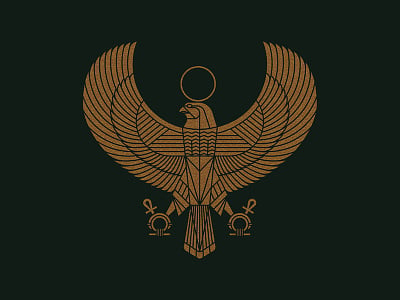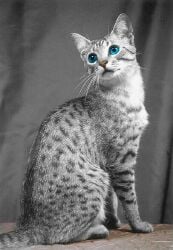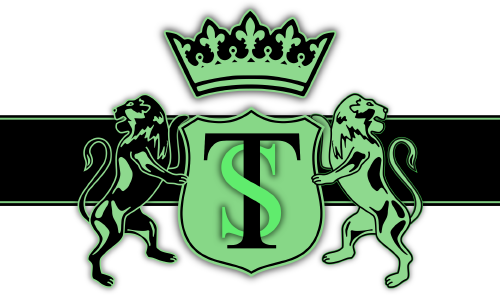| National Factbook |
| Flag: |

|
| Nation Name: |
Greater Shurima |
| Leader Name: |
Maomao |
| Currency: |

Gold |
| National Animal: |

Egyptian Mau |
| History: |
A fusion state founded by Greek colonists after signing a treaty with the local Egyptian rulers to merge into one singular state, accepting and promoting Greek and Egyptian cultures and religion. This state has a dual capital structure, with Alexandria being the de facto capital, managing most of the state's administration and is a major trading port, with Memphis being the secondary capital for managing mostly religious matters as well as the welfare of the people. |
| Geography |
| Continent: |
Africa |
| Land Area: |
266,345.77 sq. km |
| Terrain: |
Egypt’s terrain is predominantly desert, with vast expanses of arid land forming part of the Sahara. The landscape is largely flat or gently undulating, punctuated by sand dunes and rocky plateaus. The most prominent geographical feature is the Nile River, which flows from south to north and creates a fertile green strip through the heart of the country. This river valley and its delta are crucial to agriculture and human settlement. To the west lies the Libyan Desert, and to the east, the Eastern Desert stretches to the Red Sea, with rugged mountains and dry wadis. In the far northeast, the Sinai Peninsula features a mix of rocky mountains and desert plains. |
| Highest Peak: |
Mount Catherine,
2,629 meters
|
| Lowest Valley: |
Qattara Depression,
133 meters
|
| Climate: |
Egypt has a hot desert climate, characterized by long, scorching summers and mild, dry winters. Rainfall is very limited, mostly occurring in the northern coastal regions, like Alexandria, and even there it's sparse and seasonal. The interior and southern parts of the country, especially around Aswan and Luxor, are extremely arid and can go months or even years without significant rain.
Temperatures in summer often exceed 40°C (104°F) in the south, while the north, including Cairo, is slightly cooler due to Mediterranean influences. Winter temperatures are much milder, typically ranging from 10°C to 20°C (50°F to 68°F), with cooler nights. Humidity is generally low across most of the country, though it can rise along the coast. Sandstorms, known as khamsin, are also common in spring, bringing hot, dry winds and dust from the desert. |
| People & Society |
| Population: |
13,185,653 people |
| Demonym: |
Greco-Egyptian |
| Demonym Plural: |
Greco-Egyptians |
| Ethnic Groups: |
Egyptian - 65.0%
Greek - 30.0%
War Refugees - 5.0% |
| Languages: |
Greek - 40.0%
Egyptian - 55.0%
English - 5.0% |
| Religions: |
Egyptian Paganism - 65.0%
Hellenism - 34.0%
Small Cults - 1.0% |
| Health |
| Life Expectancy: |
85 years |
| Obesity: |
5% |
| Alcohol Users: |
5% |
| Tobacco Users: |
0% |
| Cannabis Users: |
0% |
| Hard Drug Users: |
0% |
| Economy |
| Description: |
|
| Average Yearly Income: |
$190.07 |
| Gross Domestic Product (GDP): |
$30,411,237,268.00 |
| GDP per Capita: |
$2,306.39 |
| Gross National Income (GNI): |
$20,885,053,990.00 |
| Industries: |
Egypt’s industry is deeply rooted in agriculture, with farming playing a central role in the country’s economy and daily life. The fertile Nile River Valley and Delta provide the main agricultural land, supporting the cultivation of key crops like cotton, wheat, rice, corn, and sugarcane. The Nile’s water is vital for irrigation, as most of Egypt’s land is desert and unsuitable for farming without it.
Agriculture supports a large portion of the population, both in employment and food supply. Despite modernization in some sectors, many farming practices remain traditional. The government continues to invest in irrigation projects and land reclamation to expand arable land and boost productivity. Overall, while Egypt’s economy is diversifying, agriculture remains a foundational pillar, especially for rural communities.
However, in times of war, local government funded industries may be mobilized to produce resources such as steel, aluminum and even ammunitions to help with the war effort. |
| Military |
| History: |
|
| Soldiers: |
0 |
| Tanks: |
24,750 |
| Aircraft: |
2,610 |
| Ships: |
0 |
| Missiles: |
0 |
| Nuclear Weapons: |
0 |
| Last Updated: 05/09/2025 06:52 pm |



















